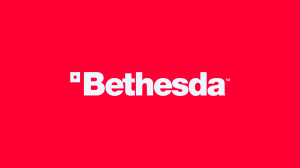Watchmen‘s famous nine-panel grid, the storytelling device used throughout Alan Moore and Dave Gibbons’s beloved deconstruction of the superhero genre, seems to be making a comeback in Doomsday Clock, the forthcoming crossover between the Watchmen characters and the heroes of the DC Universe from Geoff Johns, Gary Frank, and Brad Anderson.
Videos by ComicBook.com
The recently-released covers to Doomsday Clock #1 include a fairly standard-looking cover featuring Superman and Doctor Manhattan; a lenticular cover featuring art yet to be revealed; and a “standard” cover that appears to be just an expanded version of the comic’s first panel.
“We’ll talk about process, but Gary Frank and I talk for an hour about one panel in this,” Johns told an audience at his spotlight panel at Comic Con last month. “That’s one panel of nine on the page and every single panel we’re doing, every page of this book, every issue of this book, every color Brad is putting in, we’re really trying to tell a big story here.”
At the panel, DC co-publisher Dan DiDio unveiled a number of panels from Doomsday Clock, goading Johns to talk a little bit about each one — and all of them looked more or less the same.
That is to say, each of them had the same dimensions, and looked like one of the nine panels that would fit on one of Dave Gibbons‘s Watchmen pages.
If you aren’t familiar with Watchmen, every page is laid out in a 9-panel grid.
Sometimes panels are combined and sometimes the same image continues across multiple panels with time passing and plot advancing from panel to panel, but at all times it is in the context of a 9-panel grid.
The masterful use of the 9-panel format and the ways in which it is utilized in interesting ways to artfully bring the world of the novel to life is one of the great strengths of the work, something that ComicBook.com has noted in the past, comparing the apparent constraints of the format to Iambic pentameter in Shakespeare.
The rigidity and predictability of constructing pages around the nine-panel grid also played into the clockwork motif of Watchmen, something already evident in promotional material for Doomsday Clock as well as in the issues that have existed in the run-up to the event so far.
The nine-panel grid was used in “The Button,” the crossover story between Batman and The Flash which saw the two chasing after The Comedian’s blood-stained smiley face badge.
The fact that no image from Doomsday Clock has yet been released which would not fit into a nine-panel grid, and the fact that the cover to #1 is, as Watchmen did in its 12 issues, a reworking of a single panel from inside the book, seems to suggest that Johns, Frank, and Anderson are acutely aware of the significance of the grid as a storytelling device in the context of Watchmen and that, if it will not be used exclusively throughout Doomsday Clock‘s 12 issues, it will likely be featured prominently enough that when it is it not in use, that itself will be telling the audience something about the book or the characters.
Doomsday Clock #1 will be on the stands on November 22.








